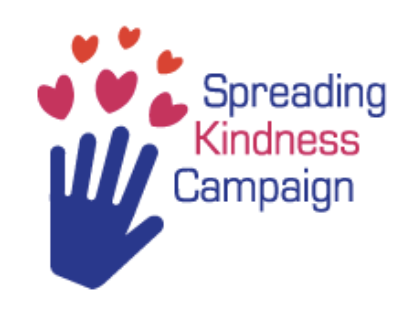Effects of Kindness and Unkindness in the Workplace
Article submitted and written by Doug Carnine, Professor Emeritus, University of Oregon
The effects of bringing compassion and kindness into the workplace can be dramatic. Dennis Tirch, a psychologist and the founding director of The Center for Compassion Focused Therapy, works with business leaders. In one case, he worked with a CEO who had begun mindfulness and compassion training to deal with personal problems. Even after her concerns about her personal life were resolved, she remained in compassion-focused coaching to help her resolve some thorny issues at work. Her firm was being restructured, and she had to make a decision that would affect the firm’s shareholders and employees. After engaging her compassionate mind, she chose to take steps that would preserve thousands of jobs and ensure the long-term viability of the business rather than make changes based on short-term profit. While this choice might have seemed less than aggressive in maximizing immediate gains, her decision led to much greater return on investment in the longer term for her shareholders, the preservation of the welfare of thousands of families, greater public goodwill, and a strengthened corporate culture.
Research on the importance of kindness across many workplaces was summarized by the Science Director of the Stanford Center For Compassion And Altruism Research And Education, Emma Seppala, and University of Michigan professor Kim Cameron. They reported in their Harvard Business Review article “Proof that positive work environments are more productive” that employees value a positive work environment over material benefits. They identified six characteristics of a positive (kind) workplace:
- “Caring for, being interested in, and maintaining responsibility for colleagues as friends.
- Providing support for one another, including offering kindness and compassion when others are struggling.
- Avoiding blame and forgive mistakes.
- Inspiring one another at work.
- Emphasizing the meaningfulness of the work.
- Treating one another with respect, gratitude, trust, and integrity.”
How can a boss nurture these six characteristics? Foster positive social connections, show empathy, go out of your way to help, and encourage people to talk to you – especially about their problems.
Looking for some quick, simple tips for how both employees and bosses can act with kindness? Try some of these:
- As an icebreaker for any work event, ask individuals to share an act of kindness.
- Compliment people who you see act with kindness.
- When giving a talk on any topic, mention kindness.
- Introduce a colleague to a contact in your professional network.
- Be a cheerleader for someone else’s idea or project.
- Be constructive in your criticism.
- When you ask someone about their work, really listen to the answer.
- Tell your boss what you appreciate about them.
- Share praise with a co-worker’s boss and their boss’s boss.
- Give a glowing but honest recommendation.
- Give someone else a break over a disagreement; give them the benefit of the doubt.
- Share your expertise. Better yet, be a mentor.
- Admit when you’re in the wrong (it helps other people feel better about their mistakes!).
- Don’t complain and don’t gossip.
- Congratulate others on their accomplishments.
- Share a positive thought about something going on at work, especially acts of kindness.
But what is meant by a more productive workplace? Seppala and Cameron define it as organizational effectiveness that includes financial performance, customer satisfaction, employee engagement and productivity. A kind (positive) work place improves relationships and creativity, attracts and retains employees, and buffers against stress, which improves health and employee ‘bounce back’ following adversity. Finally, kindness is contagious in the work place.52
Unkindness is also contagious in the work place! Lund University professor Eva Torkelson and her Swedish team found that unkindness (in this case rudeness) spreads if nothing is done about it.53 But let’s look more closely at what is meant by unkindness in the workplace. Oregon State University professor Pauline Schilpzand and her team in their article Workplace incivility: A review of the literature and agenda for future research described two types of unkindness:
- Negative behaviors such as aggression, deviance, bullying and abusive supervision.
- Incivility such as talking down to others, not listening, and making demeaning remarks. Incivility is less intense and not as clearly aggressive as negative behaviors.
Furthermore, Schilpzand and her team reported that 50% of the work force experiences incivility at least once a week. Incivility is estimated to cost companies $14,000 per year per employee.
Multiple research studies on incivility in seven countries and in 16 different types of work places point to incivility being pervasive world-wide. Incivility can cause worry, avoidance or retaliation, emotional distress, depression, disengagement from work with lowered motivation and lowered satisfaction, turn over, absenteeism, quitting, and, unkind behavior toward customers.54
Adam Grant, the Saul P. Steinberg Professor of Management at Wharton gave a popular TED talk described in this way: “After years of studying the dynamics of success and productivity in the workplace, Adam Grant discovered a powerful and often overlooked motivator: helping others.”55 In his book Give and Take, he identified four personality types in the workplace. There are doormats (who always say “yes” even at their own cost), takers (who take advantage of others), and matchers (who are always keeping score about who “owes” whom). The most kindful workplace personality type is the sustainable giver. This person reaches out to others with kindness, supporting peers while setting reasonable boundaries.56 Of the four types, the sustainable givers—those who practice kindness—experience the greatest happiness and success at work. Which type are you? Think about how being more mindfully kind in the present moment could help you shift from being a “doormat” or a “matcher” to a “sustainable giver.”
Checklist for Kindness and Unkindness in the Workplace
| KINDNESS | UNKINDNESS |
| Six characteristics of a positive (kind) workplace: – “Caring for, being interested in, and maintaining responsibility for colleagues as friends. – Providing support for one another, including offering kindness and compassion when others are struggling. – Avoiding blame and forgive mistakes. – Inspiring one another at work. – Emphasizing the meaningfulness of the work. – Treating one another with respect, gratitude, trust, and integrity.” How can a boss nurture these six characteristics? – Foster positive social connections, – show empathy, – go out of your way to help, – and encourage people to talk to you – especially about their problems. | Negative behaviors: – Aggression, – Deviance, – Bullying – Abusive supervision Incivility: – talking down to others, – not listening, and – making demeaning remarks. |
Making Eugene and Springfield “Cities of Kindness”
www.SpreadingKindnessCampaign.org
spreadingkindness7@gmail.com
NOTE: 50% of the work force experiences incivility at least once a week at an estimated cost to companies of $14,000 per year per employee.
Discover more from Springfield Bottom Line
Subscribe to get the latest posts sent to your email.






